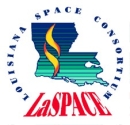



Payload 11 Information
Payload Flight Number:
Institution:
Payload Title:
Sampling Microbes In The High atmosphere (SMITH)
Student Leader:
Faculty Advisor:
Payload class:
LARGE
Payload ID Number:
11
Mass:
9000g
Current:
470 mA
Serial Downlink:
21
Analog Downlink:
not detailed
Serial Commands:
required
Discrete Commands:
4 discretes
Payload Specification & Integration Plan
Due: 06/01/2011
Delivered:
Payload Integration Certification
Scheduled: 08/05/2011
Actual:
Flight Operation Plan
Due: 07/31/2011
Delivered:
Final Flight / Science Report
Due: 12/16/2011
Delivered:
Abstract:
The goal of the SMITH payload is to sample for biological particles in the stratosphere. These samples will enable us to determine the concentration of cells and the viable fraction. The SMITH payload will also characterize the environmental conditions microbes will be facing in the stratosphere. Here we propose to develop and test an atmospheric sampling payload that may provide basis for future studies for sampling in the atmospheres of other planets. The data obtained from each environmental sensor, along with the sampling result, will allow the team to draw convincing hypotheses on life on Mars. The SMITH team is led by Noelle Bryan, under the guidance of Dr. B. Christner, P.I, and Dr. T.G. Guzik, Faculty Advisor. The team members include A. Bordelon, R. Singh, C. Toguem, and J. Zhou. To interface with HASP, there will be 3 components mounted below a standard large HASP payload interface plate with a total of 10 bolts. Temperature, pressure, humidity, ultraviolet radiation and ozone will be measured during the flight. The components require 14 watts with the maximum current drawn by a single component to be 0.3 amps. HASP requires a RS-232 serial connection to downlink data and uplink commands.
Science Report:
|